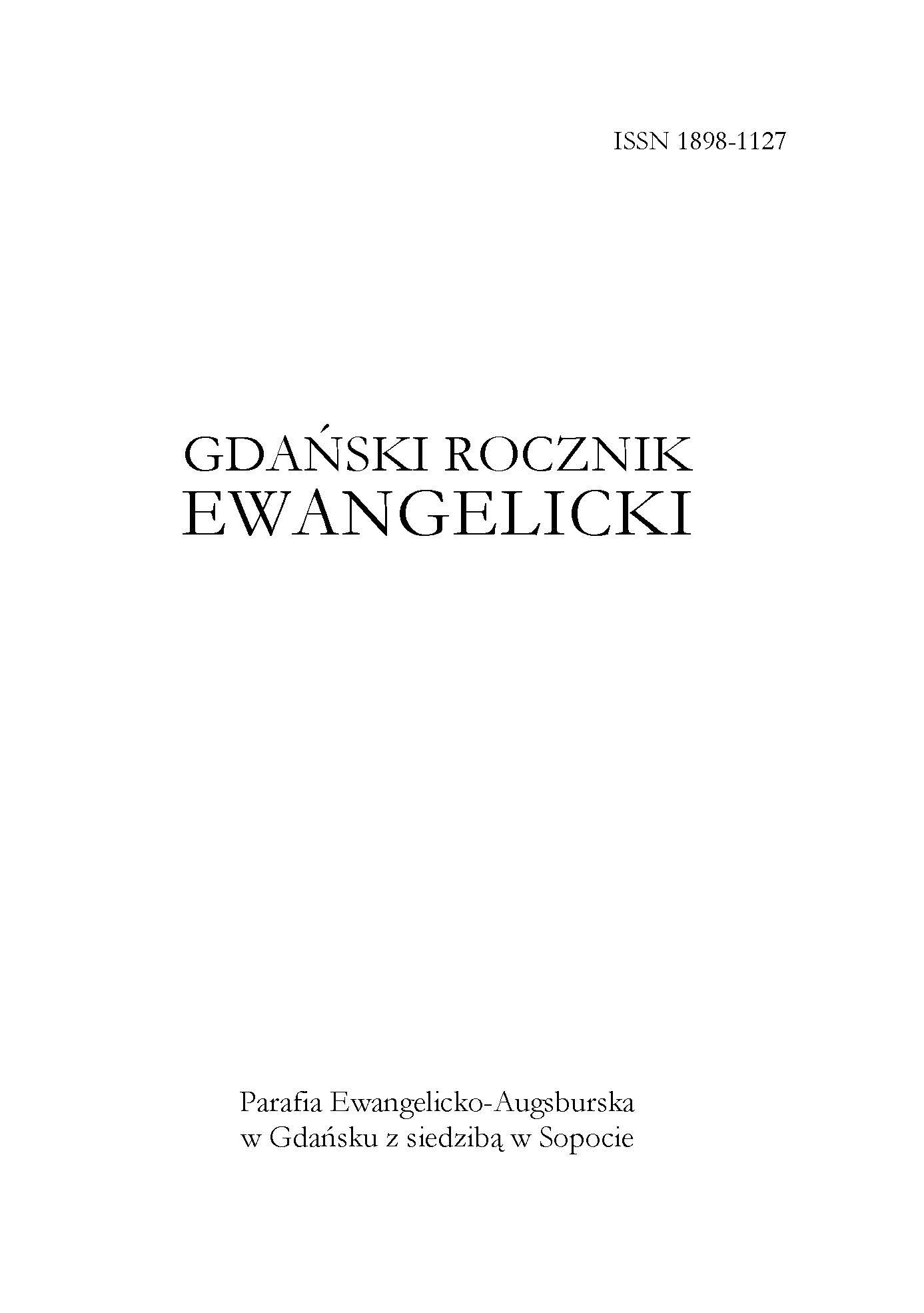
We kindly inform you that, as long as the subject affiliation of our 300.000+ articles is in progress, you might get unsufficient or no results on your third level or second level search. In this case, please broaden your search criteria.



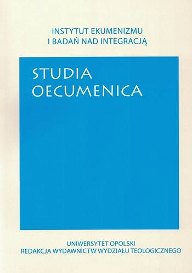
Artykuł podejmuje zagadnienie praktyki liturgicznej związanej ze śmiercią nieochrzczonych dzieci. W historycznej liturgicznej tradycji Cerkwi prawosławnej obrzęd pogrzebu nieochrzczonych dzieci nie funkcjonował. Niniejszy artykuł analizuje zmiany w praktyce liturgicznej lokalnych cerkwi w Grecji i Rosji dotyczące modlitwy za nieochrzczone dzieci. Uzupełnieniem rozważań liturgicznych i pasterskich jest obrzęd pogrzebowy nieochrzczonego dziecka, przygotowany w oparciu o aktualne greckie i rosyjskie teksty.
More...
Artykuł prezentuje badania dotyczące zabytkowych „dokumentów nestoriańskich” zwanych „Sutrami Jezusa”, które powstały podczas pierwszej misji Kościoła Wschodu do Chin w VII w. pod przewodnictwem Alopena. Teksty te są syntezą chrystologii oraz elementów teologii chrześcijańskiej istotną z punktu widzenia misji w Chinach. Opisują dogmaty chrześcijańskie za pomocą taoistycznej i buddyjskiej terminologii, filozofii, antropologii, kosmologii i symboliki. Są świadectwem rozwoju Kościoła w Chinach w ciągu trzech wieków za panowania dynastii Tang. „Sutry Jezusa” są odpowiedzią na pytanie: Co i w jaki sposób opowiedział Kościół o Jezusie Chrystusie po raz pierwszy Dalekiemu Wschodowi? Większość omawianych tekstów odkryta została w 1900 r. i jest przedmiotem badań teologów i sinologów głównie japońskich, chińskich i amerykańskich. Jednocześnie badania te zupełnie są nieznane w polskiej myśli teologicznej. Artykuł przedstawia pełną listę tych dokumentów, proponując polską nazwę oraz krótkie ich omówienie jako przyczynek do dalszych badań nad nimi. Wśród „Sutr Jezusa” na szczególną uwagę zasługuje kamienna Stela z Xi’an z wyrytym tekstem doktrynalno-historycznym, istotnym także z punktu widzenia rozwoju doktryny chrześcijańskiej w Chinach. Wnioski podkreślają wagę studiowania teologii nieeuropejskich kodowanych w innych systemach kultury i filozofii oraz pewne możliwości przekazu chrześcijańskiej doktryny także w symbolice innych religii (taoizm, buddyzm) z zachowaniem istoty doktryny chrześcijańskiej.
More...
Artykuł podejmuje aktualny temat potrzeby dialogu z osobami niewierzącymi w Kościele katolickim. Dialog to rozmowa co najmniej dwóch osób; może on być rozumiany jako metoda, proces i postawa społeczna. Dialog ekumeniczny obejmuje obszary, na których nie ma do końca zgody między rozmówcami, domaga się szacunku i umiejętności słuchania argumentów drugiej strony. Współcześnie rośnie zjawisko niewiary, zwłaszcza wśród młodych, stąd potrzeba poszukiwania form spotkań i dialogu ze współczesnym środowiskiem zsekularyzowanym. Kościół powszechny podejmuje różne próby dialogu z niewierzącymi: od propozycji inicjowanych przez oficjalne dokumenty Magisterium, poprzez inicjatywy lokalnych wspólnot i Kościołów, np. „katedra (warsztaty) dla niewierzących”, aż po uniwersalne forum wymiany, tzw. „dziedziniec pogan (dialogu)”.
More...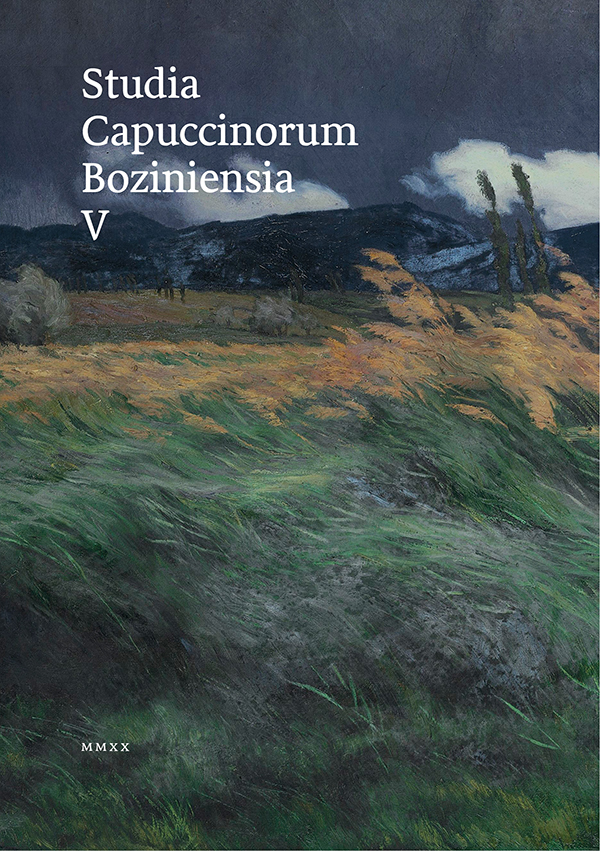
Biographical article of the life of Capuchin priest Vojtech Rudolf Rajner, who spent most of his life in the communist regime and in his prisons.
More...
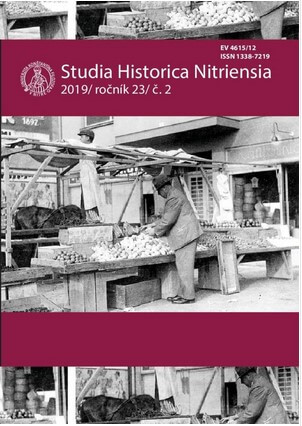
V prvej polovici septembra 2019 sa v Ružomberku, na pôde Filozofickej fakulty Katolíckej univerzity, prednášalo a diskutovalo o otázkach tvorby, praktizovania, prejavov, dôsledkov a o špecifikách kultového správania v priereze dejín. Dialosa tak na fóre 3. ročníka konferencie zameranej na kultúrne dejiny, ktorej organizátorom bola, okrem už spomínanej hosťujúcej Katedry histórie FF KU v Ružomberku, aj Česká společnost pro slavistická, balkanistická a byzantologická studia.
More...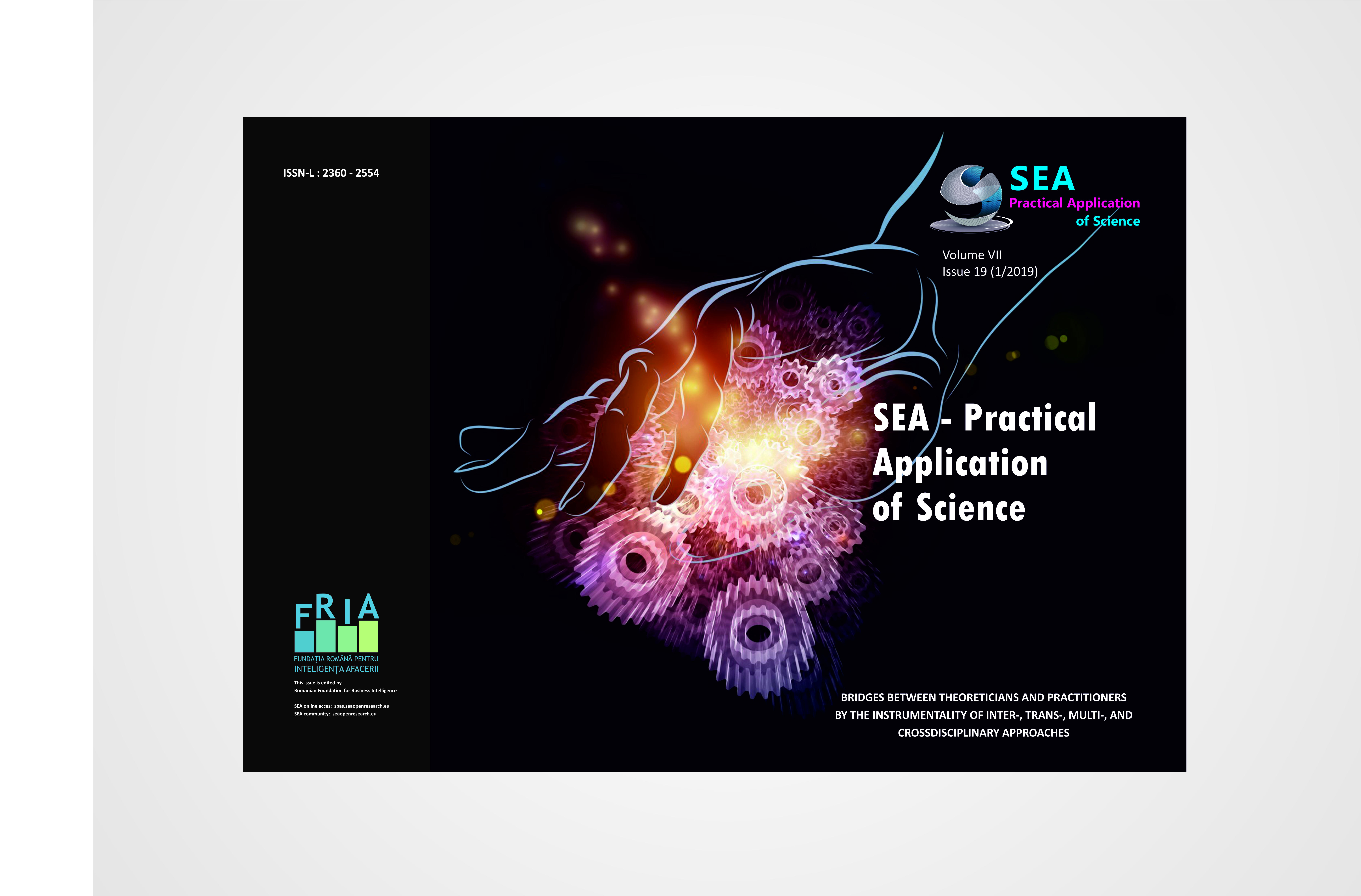
The interest in investigating the phenomenon of customer migration to the competition has grown in recent years. The efficient management of the customer base has become a powerful tool which plays a significant role in maintaining stable revenues in businesses around the world. This paper presents the evolution of research that has extensively studied the churn phenomenon and focuses on several topics: research fields according to the number of publications, research organizations, written language, authors, industries, research areas, types of works and so on. The paper also defines the terminology, the taxonomy and the causal factors of the phenomenon.
More...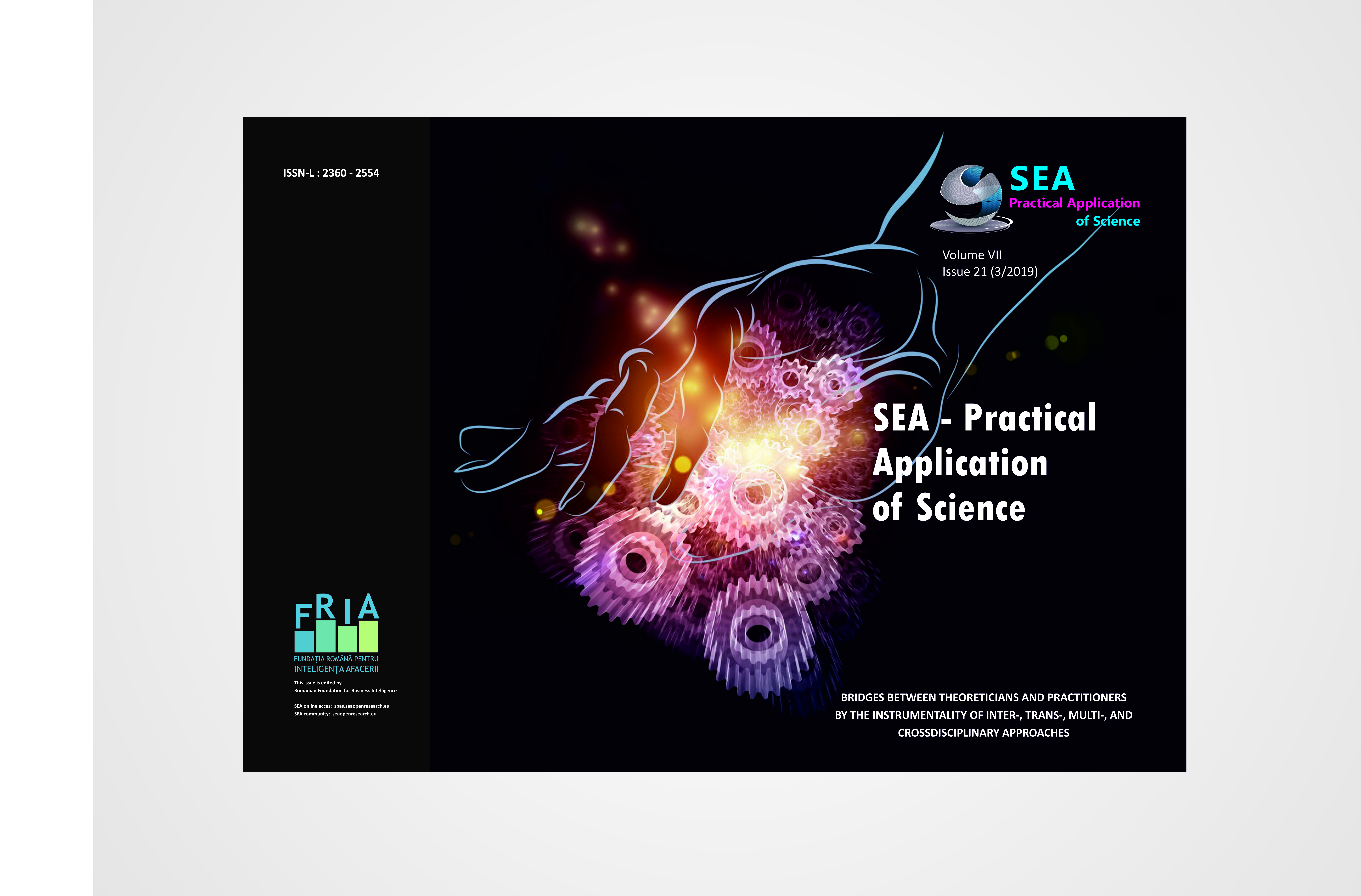
The present study aims to recover the first period of the detention of Sandu Tudor (who had become, meanwhile, the Monk Agaton), the research approach being centered on the analysis of the Archive documents. A simple reading of the file no. 013495, vol. 1 and 2, Criminal fund, located at the Archive of the National Council for the Study of Security Archives (A.C.N.S.A.S.), reveals a collection of disturbing, edifying data on this subject, as we consider. The first sheet of the aforementioned file, vol. 1, is the Cover of the File no. 1811/1950, drawn up by the Bucharest Court, the Third Criminal Section, „Posteucă Dumitru and Teodorescu Alexandru”, with the mention „War crime”. In order to offer the potential reader a more accurate image of the information obtained from the Security Archives and from the memorialistic literature regarding the concentrationary periplus of Father Daniil (Sandu Tudor), a genuine extermination regime at the penitentiaries in Jilava, Poartă Albă and Culmea, we have appealed to an evolutionary, chronological x-ray of the data, so that, subsequently, we could provide a critical, problematizing analysis of our subject from the perspective of the paradoxical ambivalence victim-executioner, representing an opportunity to demonstrate why we consider him a true paradigm of the resistance through hesychia.
More...
After 1990, „Rugul Aprins” (“The Burning Bush”) constituted a research topic that aroused the interest of theologians, historians and people of letters in the Romanian cultural space. The topic is very broad, but in this study we will only follow the configuration of the open warrior destiny of Father Daniil (Sandu Tudor), this `homo religiosus`, who, defying the „culture” of the totalitarian communist state, remained on the coordinates of a `modus vivendi` subordinated to a transcendental order. We also emphasize that the purpose of focusing on Father Daniil Sandu Tudor is, in general, the reconstruction of the complete picture of the totalitarian communist society’s dynamics and, in particular, of the resistance of the Romanian Orthodox Church under the atheist persecution. The sections of the present research approach were, in large part, constituted as an updated radiography of the realities of those times from the perspective of confessors Nicolae Rădulescu and Emanoil Mihăilescu. We believe that the analogy between the two angles of remembrance, mediated by the former students who composed the group „Teodorescu Alexandru and others” represents an efficient technique of reconstructing the historical truth.
More...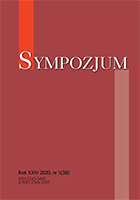
Care for the upbringing of youth has always been a key issue. For people to survive in the world, they need to constantly develop. The inclination to invest in oneself coincides at the same time with the commitment in the field of education and upbringing. The inter-generational co-operation creates an adequate potential, which serves the whole society. One of those who devoted themselves to pedagogical activity was Father Leon Dehon. He, due to social and cultural circumstances, as well as motivated to confide in the Heart of Jesus brought forth by his faith, organised an educational apostolate in Saint-Quentin. Considering the difficult times in which he lived, he undertook with courage initiatives that particularly influenced the shaping of new social, cultural and religious order. Thanks to his education and good interpersonal skills he established a school which trained France’s future social elites, as well as gave rise to a new religious congregation, organising mainly priestly formation. The aim of this article is to present a model of Dehonian education, which gave a new impulse to both the ecclesial environment and the working-class society of the 19th-century France. Due to the fruitfulness of his work, which promulgated an ideal of charity and social equality, today we also want to peruse the treasures of Father Dehon’s experiences. An attempt to invoke his thought allows us to rediscover the contemporary demand for education and formation aiming to guide humanity to holiness.
More...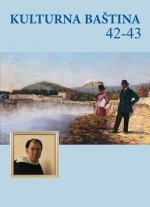
37 canvases by Fr. Vinko Marija Draganja are kept at the Split Dominican Monastery. Fr. Draganja (Split, 20th February 1856 – Split, 6th May 1926) was a Dominican friar and a painter. He was intorduced to Fr. Celestin Medović during his Novitiate year in Dubrovnik, with whom he exchanged experiences. During his senior years at grammar school, Fr. Draganja attended painting classes under the guidance of Dr Emil Vacchetti, who also taught Emanuel Vidović. Then, as an apprentice at Saint Francis’ Monastery in Zadar, he was taught by the academy-trained painter Fr. Josip Rossi. He continued his education at the Florence Academy of Art and, upon graduation, returned to his hometown as the first academy-trained painter. In his lifetime Fr. Draganja never arranged a stand-alone exhibition, but exhibited some of his paintings at exhibitions arranged at People’s Square and Saint Catherine’s Church. After his death, his paintings appeared occasionaly at local and national retrospective exhibitions and his opus was nearly forgotten. Movable objects from the Saint Catherine’s Church and the Dominican monastery were catalogued. The process itself, which was conducted within the scope of regular activities by the Ministry of Culture - Conservation Department in Split, revealed the opportunity to reassess and restore Fr. Draganja’s opus and, finally, to register his paintings as the part of cultural heritage. Conservation-restoration procedures that had been performed on 36 paintings provided thorough analysis of Fr. Draganja’s artistry and specific painting technique. His painting technique and selection of materials remained constant whereas the qualities of his paintings varied. The main objective of the procedures was to stabilize the layers of paint and then to restore deteriorated and lost parts. The procedures were based on the principles of moderate restoration-conservation intervention which did not interfere with the genuine qualities of the paintings. In the process of conservation, the restorers concluded that similar procedures had already been performed on ten paintings. The analysis of materials and methods used enabled them to date the procedures at the second half of the 20th century. Those procedures were also based on the restoration concept of mild intervention. The conservation-restoration process allowed understanding of Fr. Draganja’s works of art, which facilitated the very attribution of the painting Smrt sv. Dominika (the death of St. Dominic) to the artist himself.
More...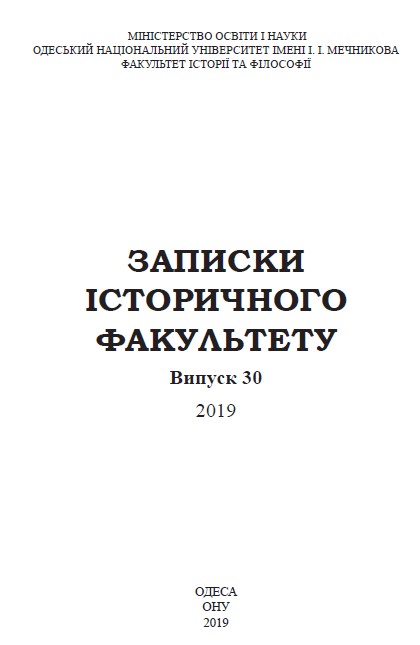
The article addresses the issue of how leading leaders of the liberal and conservative British party assessed the problem of interaction between the Anglican and Catholic churches in the nineteenth century. The main emphasis is on the social and political results of the emancipation of Catholics in English society, in the representations of Protestant or skeptical politicians or thinkers. The problem of religion in England has been an important element of social and political life since the sixteenth century. One of the most pressing aspects of this issue was the problem of relations between the Anglican and Catholic churches. After the "Reformation from above", the Anglican State Church became a unique phenomenon, which testified to the strong national trends in society. The Catholic question was not a common problem in English life, playing not only a purely dynastic or religious role, but also having political and geopolitical significance. The situation has changed dramatically since the beginning of the nineteenth century because of the act of unity with Ireland raised questions about the status of Irish Catholics in the UK government. Also, an opposition to the Anglican Church, such as Tractarianism or the Oxford movement, has developed in England as well. As the article states, that against the background of the general social tensions and economic crises that took place between 1815 and 1840, the government was forced to seek compromise. Among these compromises was the improvement of conditions for Catholics. In 1829, a parliamentary document called the "Act on the Freedom of Catholics" allowed Catholics to participate in elections and to be elected to Parliament and to confer on them other civil rights.
More...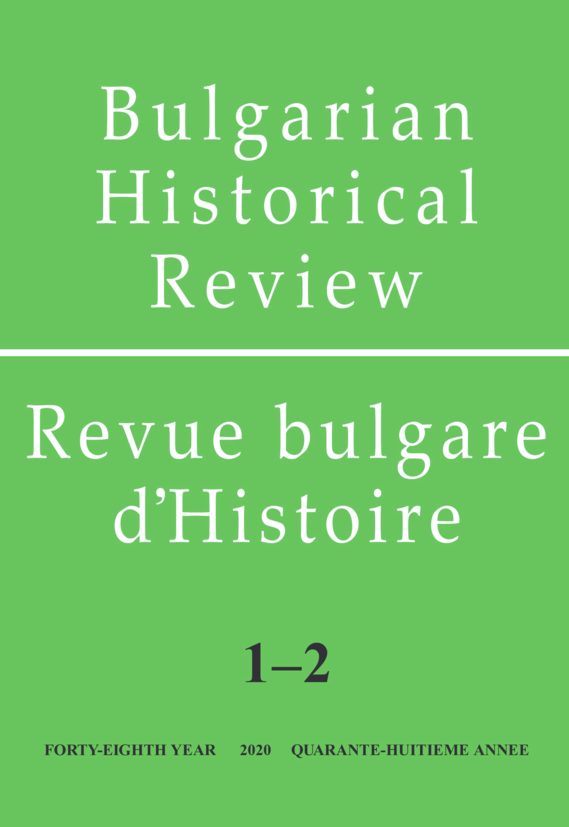
The paper elaborates on the administration of Metropolitan Kyrillos in the Belgrade Metropolitanate, which he assumed in 1825. Available sources suggest his Bulgarian origin. The paper contains biographical data about Kyrillos, such as his place and year of birth, his advancement in the structure of the Great Church and his spiritual mission, including the establishment of the exact date and place of his death. A focus is placed on Kyrillos’s versatile activity, visible in his restoration of churches and monasteries, control of the clergy and care about proper performance of rites. Also explained is his good cooperation with Serbian Prince Miloš Obrenović, whom he informed of confidential matters not only of ecclesiastical, but of secular nature as well, including diplomatic and military issues. An emphasis is also put on his illness, which significantly aggravated his work. Despite this, he persevered in carrying out his metropolitan duties until his death in 1827.
More...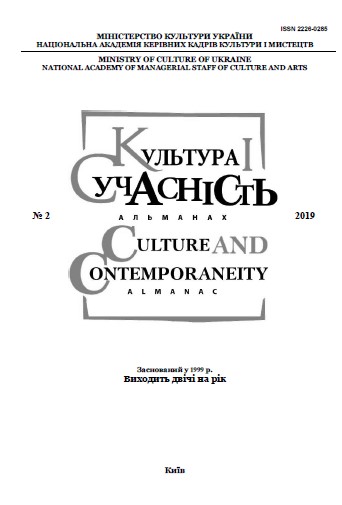
The study of the pernicious spiritual-cultural consequences of the targeted destruction (closing) of the orthodox religious buildings as one of the policy direction of the state atheism in Ukrainian SSR, the disclosing of the ideological-political and state-administrative components of the campaign mechanism aimed to liquidate the churches as the valuable component of the historical-cultural heritage. Methodology. The article is based on the historical and logical epistemological approaches, the author uses the complex of the general scientific methods with the methods of historical science, cultural studies and other social-humanitarian sciences. In particular, the structural-functional, historical-genetic, historical-comparative, cliometric, cros-cultural, historical-legal methods are used. The scientific novelty. The author based on the analysis of the documental sources makes an attempt to complex consideration of the main stages (campaigns), regulatory framework and organizing-administrative policy mechanism aimed to destruction of the orthodox spiritual-architects buildings (churches, monasteries and other objects of the national spiritual-cultural heritage) as the structural-functional component of the state atheism, the form of the religious persecution and oppression of conscience freedom in Ukraine. Conclusions. The basis of the communistic relations model with Orthodoxy constituted from the displacement of the church from the all spheres of the social life by the any ways. Sharply negative attitude of the Soviet government to the church remained unchanged during the all USSR existence, however it had the different forms depends on the external and internal state position, political will of its leaders. The state structures activity for the destruction of the churches based on the purposeful ideological solutions of the leading organs of Communist party and headed state organs. Campaigns for the churches destruction, as a rule, correlated with the persecutions of faith, orthodox clergy and laity, coincided with the repression measures against the religious groups in USSR and Ukrainian SSR. The churches destructions or its transfiguration to the civil-households and other buildings not for its purpose in the same time delivered an irreparable blow to the spiritual-cultural heritage, because the religious buildings were the organic component of the domestic history, culture, the basis of the cultural-civilization traditions and one of the main marks of the historical-cultural memory.
More...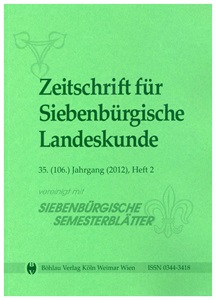
Communities both shape and are shaped by their geographical contexts, the spaces of social, economic and environmental interaction in which they are found. These spaces are fluid and contingent, reflecting and influencing changes in the community that gives them significance. This is true also of ‘spaces of imagination’, the geographical context in which the myths and self-representations of the collective are formed and given meaning. The late formation of the German nation-state, and the exclusion of many ethnic Germans from its borders, resulted in a fractured German nationalism in which local (Heimat) identities played a prominent role. This was particularly true for so-called ‘Germans Abroad’ [Auslandsdeutschtum]; German minorities living outside of Germany, mainly in scattered settlements in Eastern Europe. Far from simply reflecting the nationalism of Germany, Germans Abroad embraced understandings of Germanness that reflected their local circumstances and histories. While Heimat communities were local in origin, migration from Europe to the Americas in the nineteenth and early twentieth centuries transformed them into transatlantic communities. But what meaning did local identities have in a transnational context, and how did transnational ties of localness relate to Germans’ growing sense of German nationalism?
More...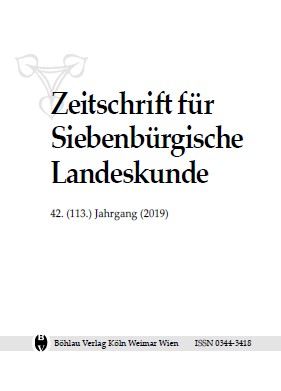
Die evangelische Stadtpfarrkirche in Kronstadt, nach einem verheerenden Brand im Jahre 1689 vor allem als Schwarze Kirche bekannt, ist eine der bedeutendsten Kirchen Siebenbürgens. Die Marienkirche, vor der Reformation als Pfarrkirche für die katholische Gemeinde der Kronstädter Sachsen erbaut, war zu jener Zeit – und ist, so scheint es, immer noch – das größte gotische Bauwerk östlich von Wien. Der Bezug des beeindruckenden Gotteshauses zu bedeutenden europäischen Bauvorhaben betrifft nicht nur die gotische Formensprache, sondern vielleicht auch einen ganz konkreten handwerklichen Beitrag. Ihre wie auch immer geartete Bauhütte arbeitete seit den letzten Jahrzehnten des 14. Jahrhunderts fast durchgehend über einen Zeitraum von einem Jahrhundert vor Ort und brachte ein für seine Zeit modernes Bauwerk hervor, bei dem sowohl Chor als auch Langhaus je drei gleich hohe Schiffe besaßen. Diese Bauform, als Hallenkirche bekannt, war in Siebenbürgen im Aufkommen begriffen; als erster ausgeführter Bau dieser Art gilt der Chor der Mühlbacher Kirche. Doch nur in Kronstadt war es gelungen, das Bauprinzip der Hallenkirche sowohl bei den Kirchenschiffen als auch beim Chor anzuwenden, weswegen das Bauwerk als Hauptvertreter der siebenbürgischen Spätgotik betrachtet wird (Abb. 1).
More...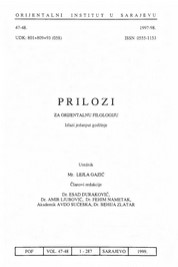
This is a review of the religious structure of the population as no other differences were manifested at that time, nor in the Middle Ages. In official Ottoman censuses all the inhabitants of all social classes were registered only as "Bosnians" who spoke the Bosnian language. This makes it clear that the Ottoman authority recognized that the Slavic people were specific although by setting up towns it tried to develop its own culture and strengthen its powering that territory. The followers of the teaching of the so-called "Church of Bosnia", which spread here from the beginning of the 13th century until the mid-15th century and was condemned as heresy, suffered brutal persecution by the Catholic Church. The struggle was waged by the Franciscans. They built their first church in 1340, and by the middle of the 15th century they had built 13 Catholic churches in Central and north-eastern Bosnia (Fojnica, Kreševo, Sutjeska, Visoko, Vranduk, then Srebrenica, Zvomik, Olovo, Bijeljina, Gornja Tuzla, Donja Tuzla, Modriča and Tešanj). So the Ottoman authorities found (1463) few followers of the "Church of Bosnia" in Bosnia. According to some scientists, its teaching never abandoned the scope of Christian orthodoxy, but it only represented particular Christian teaching in the local language. It was more a manifestation of rebellion against social injustice than it was a separate religion. It resisted both Byzantinization and Latinization of the South-Slavic countries. Particularly brutal mass persecutions of the "Christians" (krstjani), as they called themselves, took place in the last decade of the Bosnian State’s existence. Obviously those were the reasons why Sultan Mehmed II had an unexpected meeting with a congregation near Jajce when a larger group of people expressed their subservience to him. Moreover, they adopted Islam.
More...